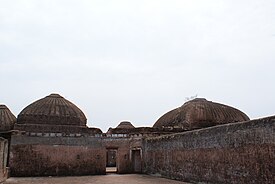
A jagir, also spelled as jageer, was a type of feudal land grant in the Indian subcontinent at the foundation of its Jagirdar (Zamindar) system. It developed during the Islamic era of the Indian subcontinent, starting in the early 13th century, wherein the powers to govern and collect tax from an estate was granted to an appointee of the state. The tenants were considered to be in the servitude of the jagirdar. There were two forms of jagir, one conditional, the other unconditional. The conditional jagir required the governing family to maintain troops and provide their service to the state when asked. The land grant, called iqta'a, was usually for a holder's lifetime; the land reverted to the state upon the death of the jagirdar.

Satna is a city in the Indian state of Madhya Pradesh. It serves as the headquarters of Satna district. It is 7th largest city and 8th most populous city of the state. The city is 500 km east of the state capital Bhopal. The city is distributed over a land area of 111.9 square kilometres.
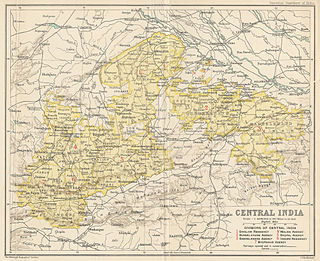
The Bhopal Agency was a section of British India's colonial Central India Agency, a British political unit which managed the relations of the British with a number of autonomous princely states existing outside British India.

Rajgarh district is a district of Madhya Pradesh in central India. The city of Rajgarh is the administrative headquarters of the district. The old name of Rajgarh was Jhanjhanipur. Rajgarh in Madhya Pradesh is one of the aspirational districts selected by Government of India. The district has an area of 6,154 km² and the population is 1,545,814. The district lies on the northern edge of the Malwa plateau, and the Parbati River forms the eastern boundary of the district, while the Kali Sindh River forms the western boundary. The district has seven tehsils, Rajgarh, Khilchipur, Jirapur, Biaora, Narsinghgarh, Sarangpur and Pachore. The district is bounded by Rajasthan state to the north, and by the districts of Guna to the northeast, Bhopal to the east, Sehore to the southeast, and Shajapur to the south and west. It is part of Bhopal Division. There are 1728 villages in Rajgarh.
Raghogarh-Ruthiyai or Raghogarh-Vijaypur is a town and municipality in Guna district in the Indian state of Madhya Pradesh.

Narsinghgarh is a town and a municipality, near Rajgarh city in Rajgarh district in the Indian state of Madhya Pradesh.

HH Maharajadhiraj Shri Maharaja Mahim Mahendra Maharao Raja Sir Bhim Singh II Bahadur, KCSI was the last ruling Maharaja of the Hada Chauhan dynasty of the Princely State of Kotah from the year 1940 to 1947.

The Paramara Dynasty ruled Malwa and surrounding areas in west-central India between 9th and 14th centuries. They belonged to the Parmara clan of the Rajputs.

Alirajpur State was formerly a princely state of India, administratively under the Bhopawar Agency subdivision of the Central India Agency. The state covered an area of 2165 square kilometres, with a population of 50,185 in 1901 and its capital at Alirajpur. The average revenue of the state was Rs.100,000 in 1901.
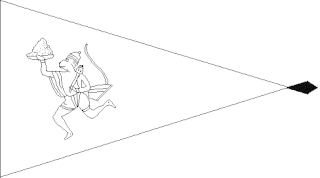
Khilchipur State was a 9 gun salute princely state in India. The seat was in Khilchipur. It had an area of 710 square kilometres (273 sq mi), and a population of 31,143 in 1901. Its estimated revenue in 1901 was Rs.1,14,000.
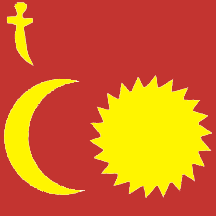
Barwani State was a princely state in India. It is ruled by Sisodiya rajput. The seat was at Barwani.
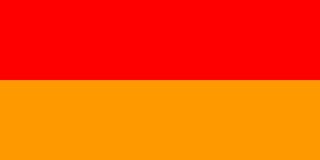
Bikaner State was a princely state in the Rajputana from 1465 to 1947. The founder of the state, Rao Bika, was the eldest son of Rao Jodha, ruler of Jodhpur. Rao Bika chose to build his own kingdom instead of inheriting his father's. Bika defeated the Jat clans of Jangladesh along with his uncle Rao Kandhal and his adviser Vikramji Rajpurohit and founded his own kingdom. Its capital was the city of Bikaner in the northern area of present-day Rajasthan State in India. Karni Mata has been designated as the kuldevi of the royal family of Bikaner.
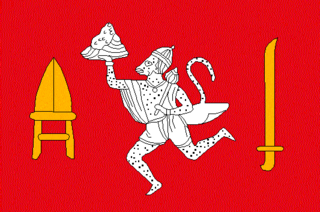
The Kingdom of Rajgarh or later Rajgarh State was a kingdom and later a princely state in India, named after its capital Rajgarh, Madhya Pradesh. It was part of the colonial Bhopal Agency of the Central India Agency during the British Raj. It lay in the region of Malwa known as Umatwara after the ruling Umat clan, a branch of the Parmar Rajputs. The neighbouring Narsinghgarh State was ruled by a cadet branch of this family, after being partitioned in 1681.

Kota State, also known as Kotah State, was a state in India, centered on the city of Kota, now located in Rajasthan State of the India.

Maharana Bhim Singh was the 26th Maharana of the Sisodia house of Mewar and the first Maharana of the Kingdom of Mewar. He was the second son of Maharana Ari Singh II and younger brother of Maharana Hamir Singh II.

Khaniadhana or Khaniyadhana was a princely state of British India ruled by the Judev dynasty of Bundela Rajputs. The capital of the State was Khaniadhana. It was part of the Bundelkhand Agency and later the Central India Agency.

Chhatarpur State was one of the princely states of India during the period of the British Raj. It was ruled by Parmar clan of the Rajputs. The state was founded in 1785 and its capital was located in Chhatarpur. It was located within what is now the state of Madhya Pradesh.

Kawardha State was one of the princely states in the Central Provinces of India during the period of the British Raj. The capital of the state was Khairagarh town, in Kabirdham district of Chhattisgarh state. The Bhoramdeo Temple is located less than 20 km to the west of the main town.

Makrai State was a princely state in India during the time of the British Raj. The seat was in Makrai.

Raghogarh State, also known as Raghugarh and as Khichiwara, was a princely state of the Gwalior Residency, under the Central India Agency of the British Raj. It was a Thikana state of about 109 km2 with a population of 19,446 inhabitants in 1901. The Parbati River marked the western border of the state. The capital was at Raghogarh in present-day Guna district of Madhya Pradesh.

